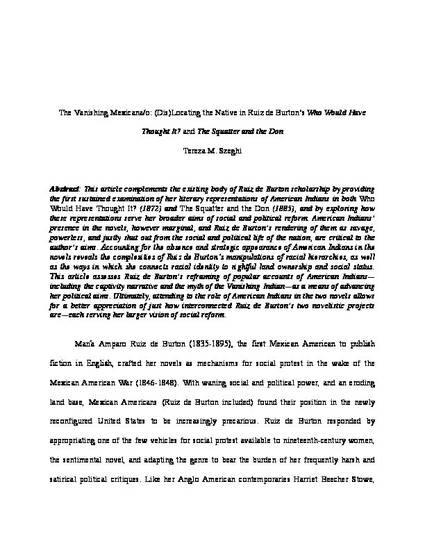
This article complements the existing body of Ruiz de Burton scholarship by providing the first sustained examination of her literary representations of American Indians in both Who Would Have Thought It? (1872) and The Squatter and the Don (1885), and by exploring how these representations serve her broader aims of social and political reform. American Indians’ presence in the novels, however marginal, and Ruiz de Burton’s rendering of them as savage, powerless, and justly shut out from the social and political life of the nation, are critical to the author’s aims. Accounting for the absence and strategic appearance of American Indians in the novels reveals the complexities of Ruiz de Burton’s manipulations of racial hierarchies, as well as the ways in which she connects racial identity to rightful land ownership and social status.
This article assesses Ruiz de Burton’s reframing of popular accounts of American Indians—including the captivity narrative and the myth of the Vanishing Indian—as a means of advancing her political aims. Ultimately, attending to the role of American Indians in the two novels allows for a better appreciation of just how interconnected Ruiz de Burton’s two novelistic projects are—each serving her larger vision of social reform.
Available at: http://works.bepress.com/tereza_szeghi/9/

Published by the UCLA Chicano Studies Research Center Press. The item available for download is the author's accepted manuscript. Some differences may exist between this version and the published version; as such, researchers wishing to quote directly from this source are advised to consult the version of record.
Permission documentation is on file.